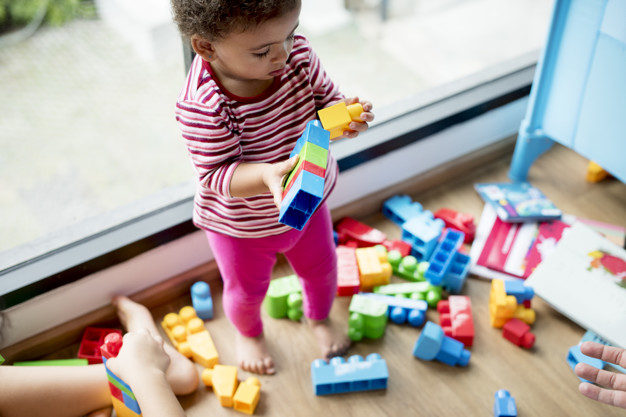Introduction
Play-based learning is an engaging and effective strategy that aids in the development and education of children. It leverages games and various activities as a means of imparting essential skills and knowledge. Through play, children can enhance their creativity, bolster their social skills, and hone their problem-solving abilities. This method is adaptable and suitable for all children, regardless of their interests or skill levels. For more information on the benefits of play-based learning, check out Play-based Learning Inspiration page on EducationAll.
The Essence of Play-Based Learning
Envision a classroom brimming with vibrant and captivating tools such as art supplies, puppets, building blocks, musical instruments, gardening implements, and sensory resources. These items are more than mere playthings; they are crucial educational resources that encourage children to investigate, invent, and absorb knowledge in stimulating ways.
Creative Arts: A Medium for Expression
Creative arts materials provide a medium through which children can express their inner thoughts and emotions via drawing, painting, and crafting. This activity is not solely about enjoyment; it also plays a significant role in helping them articulate and process their feelings and ideas. Art activities allow children to explore different textures, colors, and techniques, fostering fine motor skills and creativity.
Puppetry: Developing Narrative Skills and Empathy
Puppets are another key tool in play-based learning. Far from being just entertaining, they facilitate the development of narrative skills and empathy, as children engage in puppetry to explore various viewpoints and emotions. Using puppets, children can act out stories, solve conflicts, and express themselves in a safe and controlled environment.
Building Blocks: Laying the Foundation for Math Skills
Building blocks serve as another fundamental component of play-based learning. Engaging with blocks, children come to understand shapes, dimensions, and spatial relationships, laying the groundwork for mathematical skills. Moreover, constructing with blocks introduces concepts of cause and effect, strategic planning, and problem-solving. Even complex concepts like botany can be explored through building sets like the LEGO Botanical Collection sets, where following instructions and manipulating pieces helps children understand plant structures and fosters a love for nature. Children learn to experiment, hypothesize, and see the tangible results of their efforts.
Musical Instruments: Enhancing Auditory Skills
Musical instruments expose children to the realm of sound, rhythm, and melody. Engaging with music enhances auditory skills, boosts concentration, and can even support mathematical learning through the comprehension of beats and sequences. Music activities also foster self-expression and collaboration, as children often play in groups and learn to coordinate with others.
Gardening: Connecting with Nature
Gardening tools connect children with nature, teaching them about life cycles, responsibility (through caring for plants), and science basics like photosynthesis and ecosystems. Gardening activities can nurture a sense of responsibility and patience, as children learn that plants need time and care to grow. It also provides a hands-on way to understand biological processes and the environment.
Sensory Tools: Supporting Diverse Needs
Sensory tools are crucial for all children, especially those with additional needs. These tools help children explore their senses: touch, sight, sound, smell, and sometimes taste. They support emotional regulation, fine motor skills, and cognitive growth. Sensory play can include activities like sand play, water play, or using textured materials, which help children calm down, focus, and develop their sensory processing skills.
Creating a Natural and Enjoyable Learning Environment
This approach fosters a learning environment that is both natural and enjoyable. Children become more engaged and motivated, encouraged to inquire, seek solutions independently, and cultivate a passion for learning that extends beyond traditional educational settings. By integrating play into the learning process, educators can create a dynamic and interactive classroom where children are eager to participate and learn.
Personalized Learning through Play
The essence of play-based learning lies in its acknowledgment of each child’s individual learning pace and interests. It embodies the belief in the vast potential of every child and recognizes play as a potent means for unlocking that potential. Through play, children can explore their interests, learn at their own pace, and develop a love for learning that will stay with them throughout their lives.
Investing in the Future
Investing in play-based learning resources is not merely a purchase of toys; it is an investment in our children’s futures, providing them with the curiosity, knowledge, and skills necessary to succeed in a constantly evolving world. These resources support holistic development, ensuring that children grow into well-rounded individuals capable of critical thinking, creativity, and collaboration.
Conclusion
In conclusion, play-based learning is a powerful approach that can transform the educational experience for children. By incorporating creative arts, puppetry, building blocks, musical instruments, gardening, and sensory tools into the learning process, educators can provide a rich and varied environment that caters to all aspects of a child’s development. This method not only makes learning enjoyable but also equips children with the skills they need to navigate and succeed in the world. Embracing play-based learning is an investment in creating a brighter, more dynamic future for our children.



